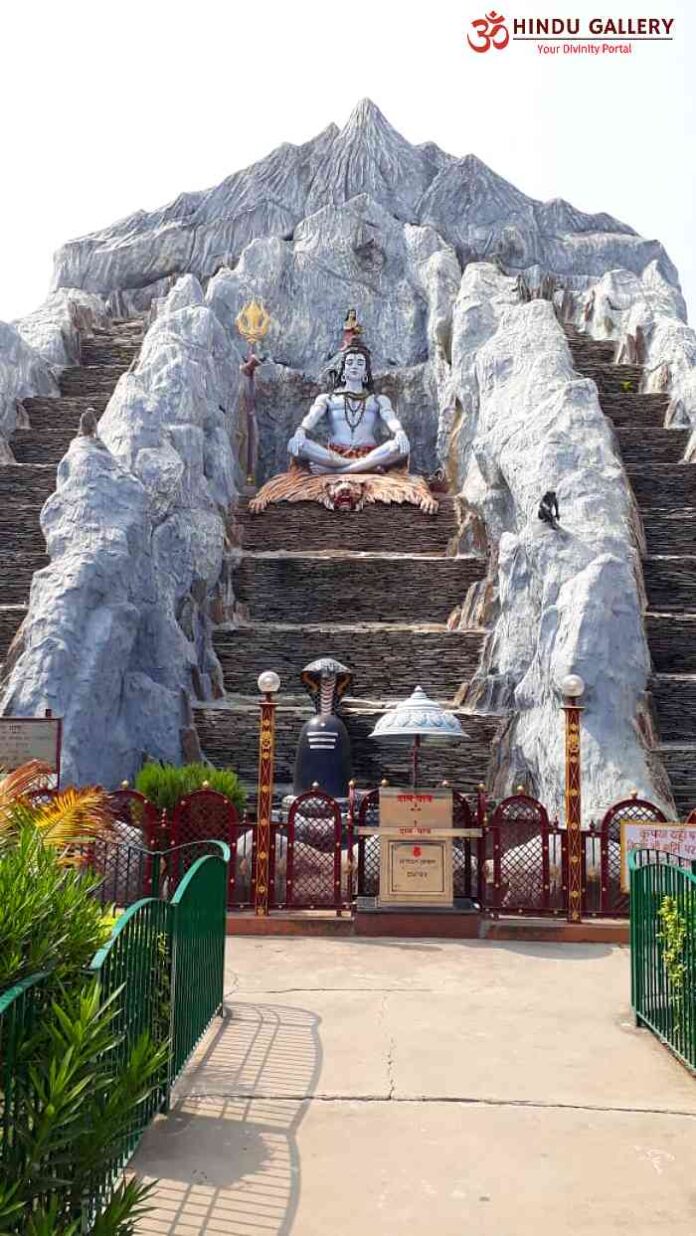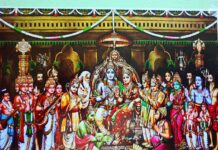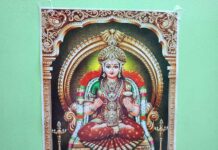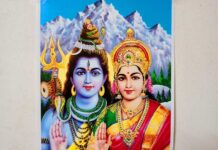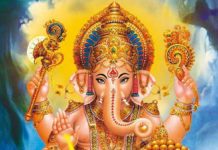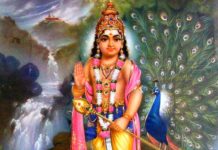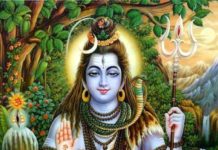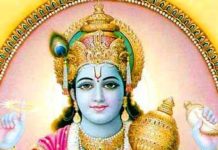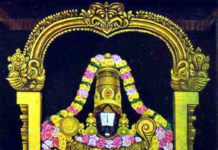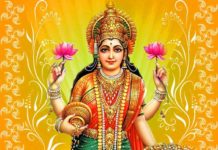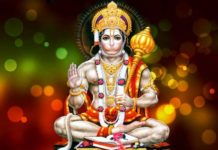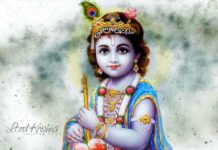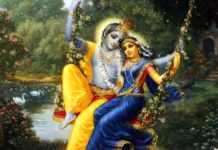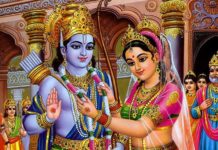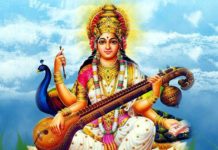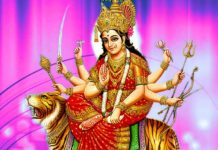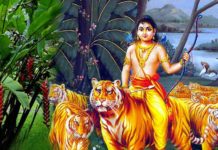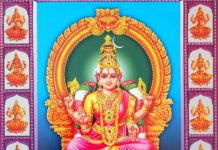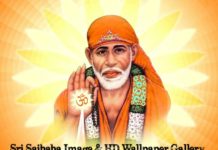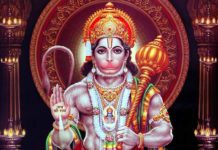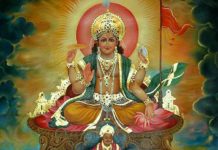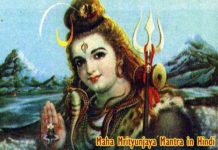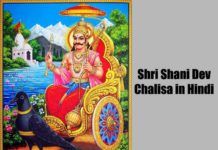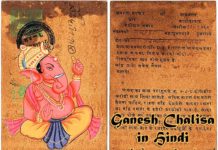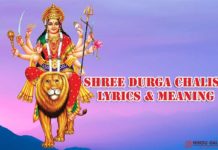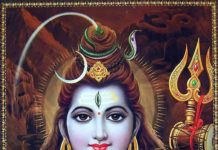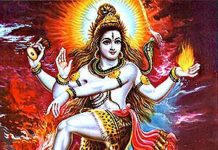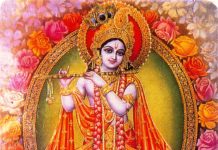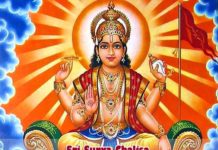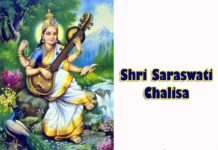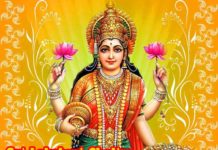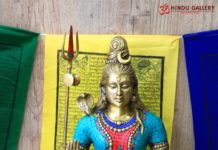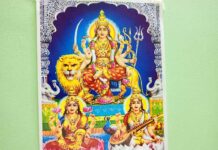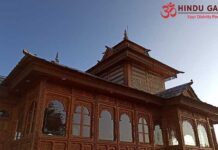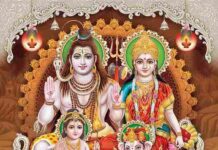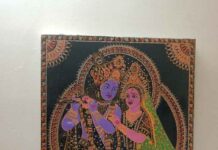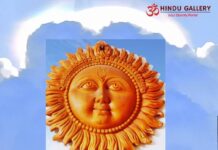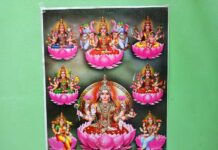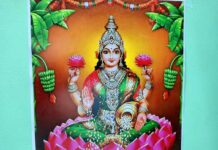Sri Maha Shivratri is the festival ascribed to Bhagwan Shiva. Shivratri is the Krishna Paksha Chathurthasi day [14th day from the Poornima (full moon day), i.e a day prior to Amavasya (new moon day)]. Every year has 12 masik Shivratris. ”Shiv-ratri” means the night dedicated for Bhagwan Shiva.
Sri Maha Shivratri is the masik Shivratri which falls in Magha / Phalguna months of Amanta and Purnimanta Calendars respectively. It occurs on Friday, 8th March 2024.
It is believed that the observation of Sri Maha Shivratri Vrat shall result in the following:
-All the bad elements in the body get relieved;
-Due to the feeling of the presence of Bhagwan Shiva, life itself is sanctified; and
-It also signifies the overcoming of ignorance and darkness in life.
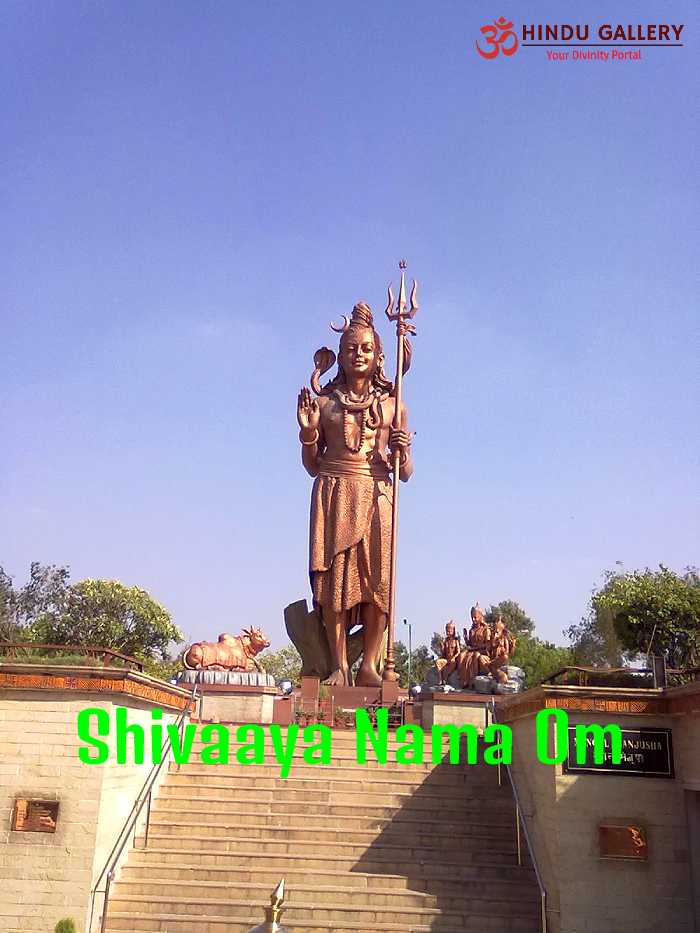
Sri Maha Shivratri – legends
There are many legends related to Sri Maha Shivratri.
Sri Shiv Puran
There was a hunter named Rurutraka. He had no inkling of mercy towards anything and anyone.
Hunter family
One day, he could not catch any animal. His family members were very hungry. They drove him away to bring anything to eat.
Hunter’s anticipation
He walked a long way and yet still could not find any animal to hunt. He was weary. Sighting a pond, he halted there.
Taking some water in a container, he climbed on the nearby tree. His idea was to wait for any animal approaching the pond for water and hunt it.
Significance of the hunter’s hiding place
The hunter was actually sitting on a bilva tree. There was a Shiv Ling under the tree. That day was a Krishna Paksha Chathurthasi day. He was not aware of any of these matters.
Arrival of the preys
By evening time, one female deer came near the pond. When the hunter tried to aim the weapon for hunting, some water from the container fell on Shiv Ling. Some bilva leaves also descended on Shiv Ling.
The deer told the hunter, “Hey, I am glad to be your food. But please allow me to inform my husband and the kids. I will meet them, will take leave of them and come back to you. I promise!”. The hunter had no reason to doubt the deer’s sincerity and accepted its words.
The deer left the place to keep up its promise.
After sometime, another female deer came to the pond. When the hunter aimed to strike, again some water and bilva leaves spilled on Shiv Ling. This deer also made the same promise as the first deer. In fact, both the female deer were sisters and married to the same male deer.
The hunter was happy that he would be getting two deer. So, he let this deer also to fulfill its promise.
Sometime later, a male deer came to the pond. It was the husband of the previous two deer. The hunter again aimed with his weapon. This time also, some water and bilva leaves fell on Shiv Ling. This male deer told the hunter, “Hey, please wait. I will inform my wives and kids and then come back to you. You can have me as your food. I promise”
The hunter allowed this deer also thinking that he would get more meat from the male deer.
Sacrifice offered by the Deer
After some time, the male deer and the two female deer came to him. Each asked him to kill itself and leave the other two. Even the kid deer came to the place and offered themselves instead of any of the parents.
The hunter was very much moved at the show of affection. This was a new experience to him. He felt helpless.
Bhagwan Shiva darshan
Unknowing to himself, he did abhishekam to the Shiv Ling with water and showered bilva leaves three times that too on a Shivratri day. Bhagwan Shiva was pleased and appeared before him.
Bhagwan Shiva told him, “even without knowing, you did puja to me thrice today. Today is Shivratri. Hence, I am granting pardon to you. All your sins are alleviated. In the next birth, you will be born as Guha. Bhagwan Rama Himself will befriend you”.
From that day onwards, pleased with Bhagwan Shiva’s darshan, the hunter became the Shiv-Bhakt. He started showing mercy to all.
Apart from Sri Shiv Puran reference, there are other two hunter related stories.
Lubdhaka story
This story is about Lubdhaka, a poor tribal man. He was an ardent Shiv-Bhakt.
Forest visit
One day, he went into the forest for collecting wood for fire. He kept wandering and went to the midst of the forest. It was very dark. Though he collected the required firewood, he could not return as it was too dark.
Staying on the tree
So, he climbed a tree and sat on a branch. He did not fall asleep as he thought that he might roll over and fall. Hence, to keep himself awake, he started chanting Bhagwan Shiva’s name. For each chant, he plucked a leaf and dropped it on the ground.
Dawn
At the dawn, he had alighted from the tree. To his surprise, he found that there was a Shiv Ling under the tree. He also realized that he was perched on a bilva tree.
Without any knowledge he had done archana to Bhagwan Shiva with bilva leaves. He also realized that as he had done puja to Bhagwan Shiva all night even without the knowledge of doing so, no wild animals had harmed him. Incidentally, the previous night was Maha Shivratri.
Blessing
Bhagwan Shiva was pleased with his puja and appeared before him. The Bhagwan also granted him boons.
Mahabharat
As believed, the story of Shivratri was narrated by Bhishma to Yudhishtra when Bhishma was lying on the bed of arrows.
King Chitrabhanu
There was a King named Chitrabhanu. He and his wife were observing fasting on Maha Shivratri day. A Sage named Ashtavakra visited the King. He asked the King the reason for his fasting.
King’s previous birth
The King welcomed the Sage. He told him that he had the blessings and boon to know about his previous birth.
In his previous birth, the King was born as a hunter named Suswara. He narrated about his previous birth to the Sage.
Suswara’s life
He used to kill either animal or bird to feed himself and his family. One day, he went to the forest for hunting. He could not get any prey.
Sighting a pond, he thought of waiting there. He surmised that some animal might come to drink water and that he could catch it.
Very late in the evening, a deer came to the pond to drink water. Suswara shot an arrow and killed it. But as it was getting dark, he could not get back home.
Suswara’s refuge on a tree
He sighted a tree nearby. He tied the dead deer to a branch and climbed up the tree. Thinking of his wife and kids, he felt sadness. He knew that they would be waiting for him and starving. This brought tears to his eyes.
To prevent falling from the tree, he kept himself awake. He could not control his weeping either. Absentmindedly, he kept plucking leaves from the tree and dropping them.
Dawn
At the dawn, he came down from the tree and was surprised to find a Shiv-Ling under the tree. He realized that he was sitting on a bilva tree. He also had poured his tears on Shiv-Ling.
He was humbled with his blessings of doing Shiv puja even without knowledge. Removing the deer from the tree, he started home.
New guest at home
He had sold the deer and with the money, bought food for himself & his family and went home. He had apportioned the food to all.
When he sat down to eat his portion, an old poor man came to his door and asked for food. Suswara had given his food to him.
Thereafter he was continuing his life as hunter.
End days of Suswara
During his end days, Shiv Ganas came and directly took him to Shiv lok. He told them that he did not do any noble thing in his whole life.
They told him, “without being aware of it, you have done bilva archana to Bhagwan Shiva on Shivratri night. Further, you have foregone food for the sake of an old man. These actions have alleviated all your sins”.
Bhagwan Shiva darshan
Bhagwan Shiva then gave him darshan. He told him that in his next birth, Suswara would be a good Shiv-Bhakt.
Thus, King Chitrabhanu narrated his story to the Sage. He also told him that he was the pious person because of the observation of vrats.
Sri Maha Shivratri – Shiva Parvathi marriage
As per another belief, Bhagwan Shiva had married Goddess Parvathi on Maha Shivratri day.
Sri Devi Puran
It is believed that as per Sri Devi Puran, Sri Parvathi Devi was born as Sati, the daughter of Daksha. She was married to Bhagwan Shiva. Daksha never respected his Son-in-Law.
Daksha’s Yagna
Daksha did a Havan (homam / yagna) to appease Gods. His daughter and son-in-law were also present. But he had insulted Bhagwan Shiva. Sati Devi was furious. She was agonized at the treatment meted out to Her husband.
Sati’s swiftness
Anguished, Sati Devi plunged into the Yagna fire and lost Her life. Everyone was astonished. Bhagwan Shiva was forlorn. He took the lifeless form of His wife and was roaming around the world.
Sri Vishnu’s action
On seeing the misery of Bhagwan Shiva, Sri Vishnu had sent His Sudarshan Chakra to severe the corpse of Sati to 108 pieces. The pieces fell into 108 places. Each of the place is considered as Shakti-Peet.
Bhagwan Shiva’s loneliness
Bhagwan Shiva was desolate and went into deep meditation. As He did not pay attention to anything, there was chaos everywhere. He went into severe penance as well.
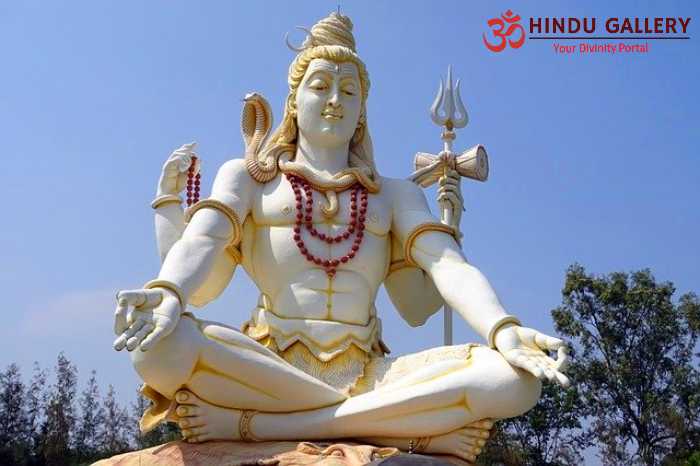
Parvathi Devi
Meanwhile, Sati Devi was reborn as the daughter of Parvatha Raja, the King of mountains. As Parvatha’s daughter, She was known as Parvathi. She too did penance of Bhagwan Shiva to be reunited with Him.
Marriage arrangements
Parvatha Raja had expressed his desire to the Devas of marrying off his daughter to Bhagwan Shiva. They were happy. With the help of Sri Vishnu, they approached Bhagwan Shiva. Bhagwan Shiva also has accepted.
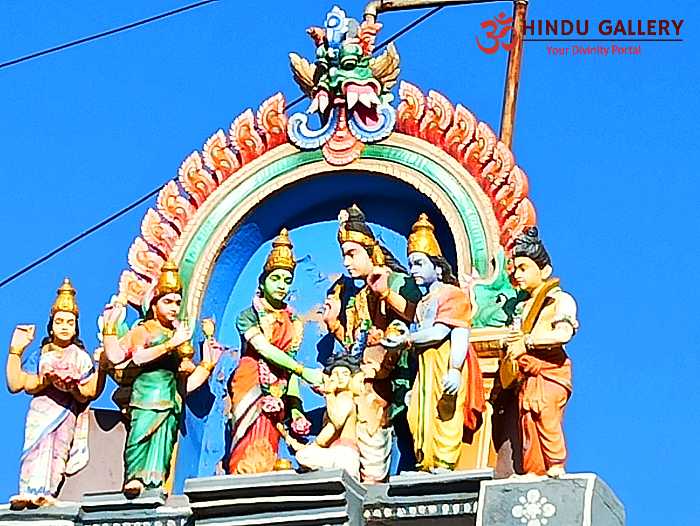
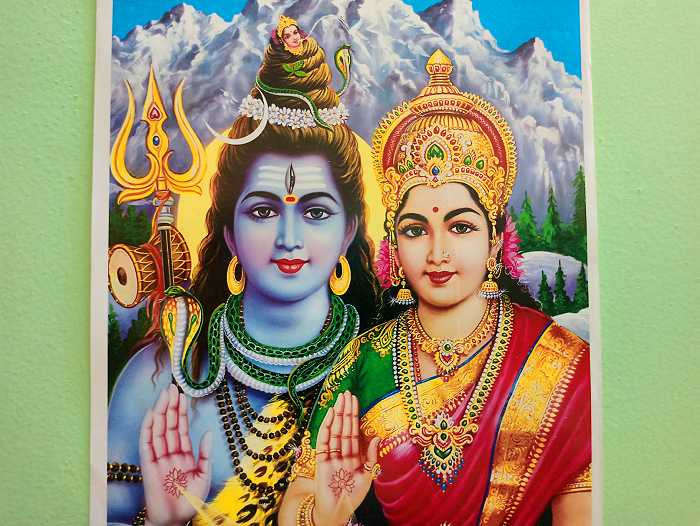
Then on Maha Shivratri day, Goddess Parvathi and Bhagwan Shiva were married.
Sri Maha Shivratri – Samudra manthan
As per yet another belief, Maha Shivratri is said to be associated with Samudra manthan, i.e churning of cosmic ocean.
Once there was a fierce fight between Devas and Asuras with respect to living in Devaloka. They went to Sri Maha Vishnu. He said-
“You Devas can attain eternity only if you have the Amrut(nectar) from the cosmic ocean, Ksheera Sagara. So, go and get mandara parvata to use as the catalyst to stir the ocean. Also, get Vasuki, the snake as the rope to churn the mandara. You promise Vasuki that she will also be given the portion of Amrut”.
The Devas duly brought the Mandara mountain and started churning. The Asuras were holding the head side of the Vasuki and the Devas were holding the tail side. However, the Mandara kept slipping as it had no base to stand upon.
Again, Devas went to Sri Vishnu for help. He himself took the form of tortoise and asked Devas to keep the Mandara on Him and do the churning. They did so.
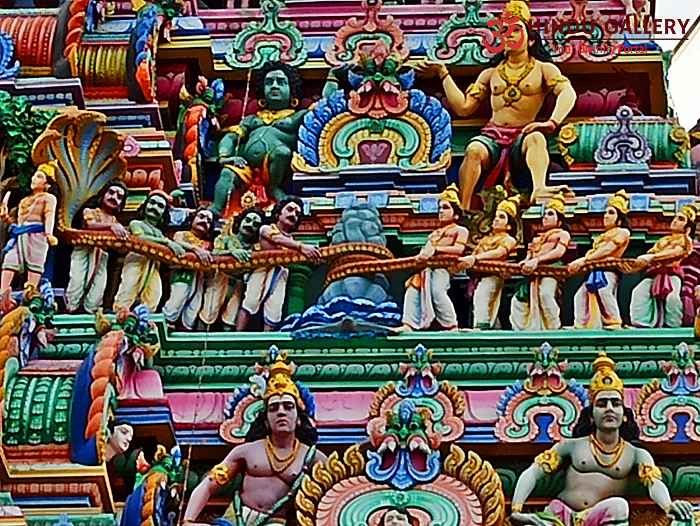
Bhagwan Shiva taking Halahala poison
Upon churning, lot of things emerged. The first one was the Halahala, the poisonous substance. As guided by Sri Vishnu, the Devas had requested Bhagwan Shiva to protect them from Halahala. For the universal benefit, Bhagwan Shiva had consumed the poison.
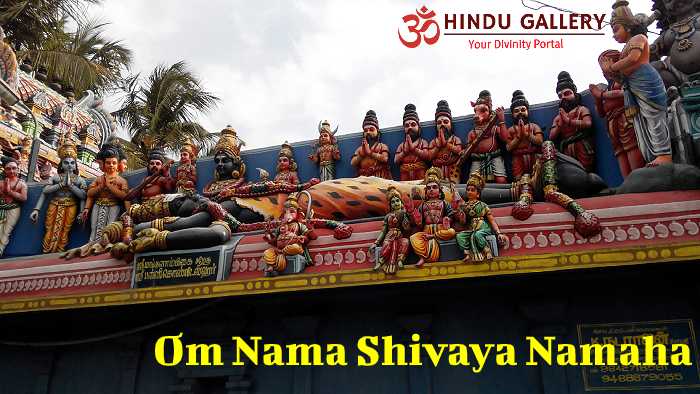
However, Sri Parvathi stopped it at His neck itself. Due to the retention of the poison, Bhagwan Shiva’s neck had become blue in colour. For this reason, He is called Sri Neela Kanta.
Therapy to Bhagwan Shiva
Though the poison stayed in His throat, Bhagwan Shiva did not completely recover. So, the celestial therapists suggested that He should stay awake the whole night.
In order to make Him alert and awake, all the Devas did bhajans and dances to please Bhagwan Shiva for the whole night. That night was considered as Maha Shivratri.
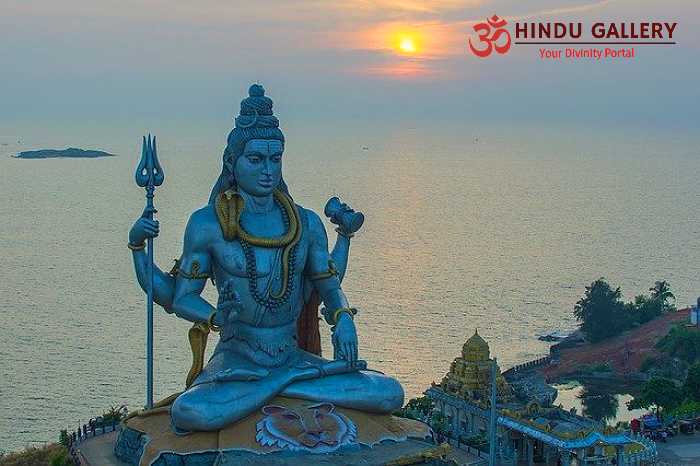
The existence of poison in His throat had caused too much heat in His head. To quench the heat, He had to take continuous water shower. That is why He has river Ganga in His head. That is also the reason for doing constant abhishekams to Bhagwan Shiva.
Shiv Tandav
It is believed that only during Shivratri night, Bhagwan Shiva had performed the cosmic dance.
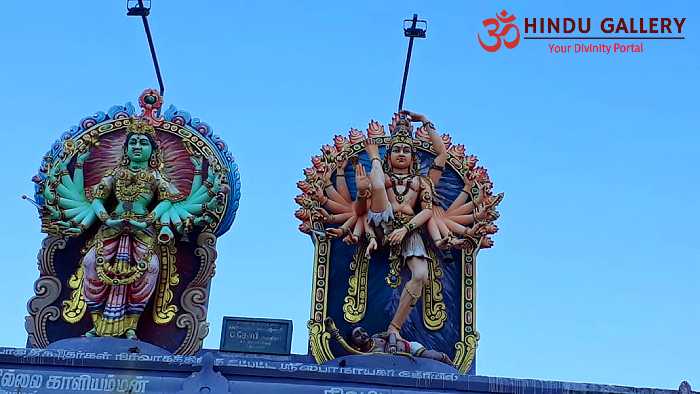
Along with Bhajans, the Shiv-Bhakts also dance during Shivratri night.
Emergence of Shiv Ling
It is believed that Bhagwan Shiva had manifested into a Shiv Ling form for worship on this day. Sri Parvathi Devi had done puja to Shiv Ling four times on Shivratri for the welfare of the universe.
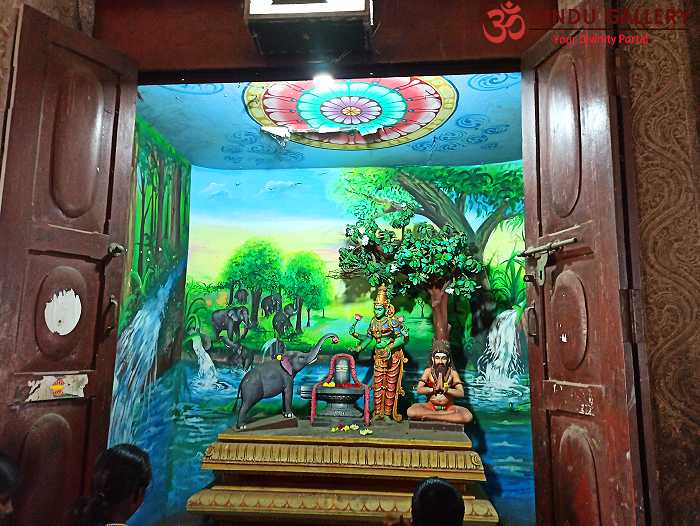
Sri Skanda Puran
The significance of Shiv Ling is given as the explanation given by Sri Nandikeswara to Sage Agastya. Prakruti, the mother nature has three gunas, i.e characteristics namely satva(stability), rajas(active) and tamas(calmness).
At the end of each Yuga, Prakruti alongwith its three gunas merge with Paramatma. After the merger, it gets the shape of Shiv Ling. Shiv Ling, on its own does not have any characteristic. It is called Nirgun.
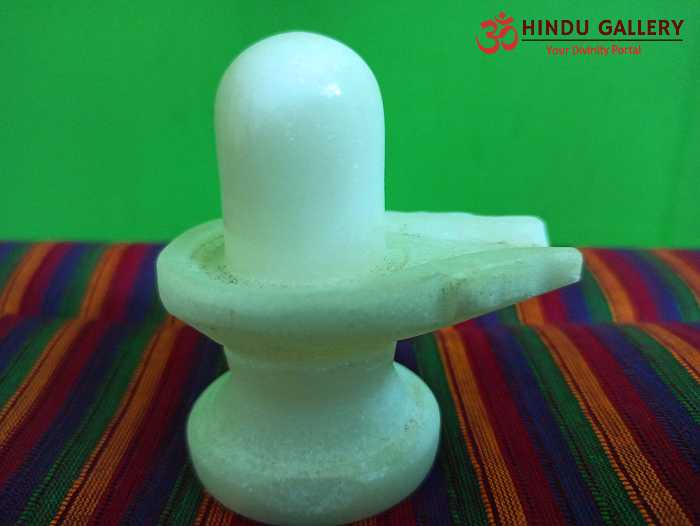
Hence, worshipping of Bhagwan Shiva in Shiv Ling form signifies the attempt at devotion with liberation from worldly ties.
Another legend
As per another belief, once Sri Vishnu and Sri Brahma were fiercely fighting with each other as to who was better. The dual was getting too far. The Devas were agitated at this.
They approached Bhagwan Shiva for reconciliation between Vishnu and Brahma. Bhagwan Shiva tried to pacify the warring Lords but they did not listen to Him. So, Bhagwan Shiva took the form of a blazing Shiv-ling and appeared between the two.
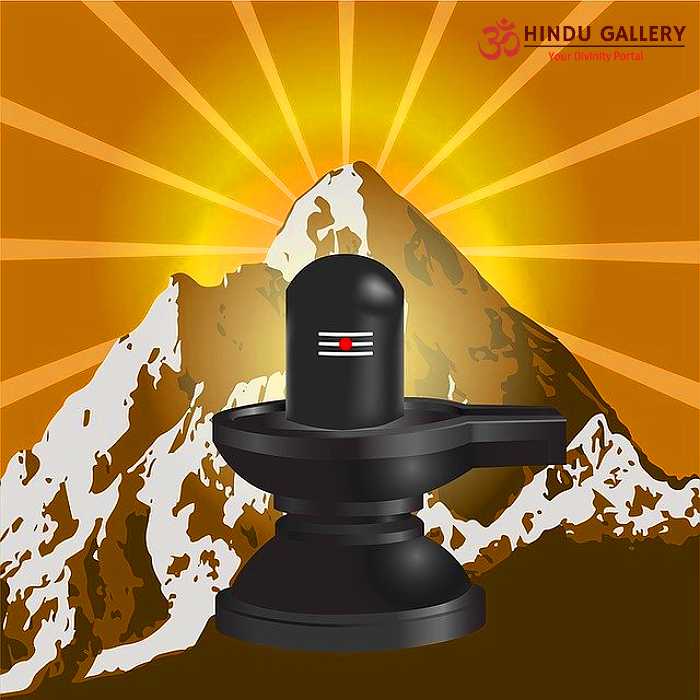
They could not ascertain what it was. The Ling was so glittering and fascinating. They were awestruck.
Bhagwan Shiva appeared from the Shiv-Ling and told them “You two are part of me. We all come from the same Brahmam. We all are equal. Henceforth, there should be no feuds like this”.
This appearance of the fiery gigantic Shiv-ling is believed to have happened on Maha Shivratri day.
Significance of Ganga
As per the legend, there was a King named Sagar. He was the ancestor of Raghuvamsa. Bhagwan Ram belongs to this lineage.
Ashwamedh Yagna
King Sagar did Ashwamedh Yagnas frequently. As per the ritual, he used to send his horse to roam around the earth. Once it returned unchallenged, he would do the Yagna. Like this, he did Ashwamedh Yagna 99 times.
100th time Yagna
He wished to do the Yagna for the hundredth time. So, he sent out his horse for going round the earth. Lord Indra, who was jealous of King Sagar, wanted to disrupt the Yagna.
Indra had caught the wandering horse and kept it in Sage Kapila’s ashram.
Search for the horse
Not knowing the whereabouts of his horse, King Sagar had sent around his Princes consisting of his sons and nephews to find and fetch the horse. They went to several places and at last found the horse in the ashram of Sage Kapila.
Princes’ folly
The Princes had mistaken that Sage Kapila had usurped the horse. They started attacking him. Sage Kapila was enraged. In his anger, he made them all burn.
Bhagiratha
Bhagiratha was one of the grand children of King Sagar. He heard about the death of the Princes. He mourned for his uncles and grandfather. He approached Sage Kapila and requested for forgiveness. He requested the Sage to revive the Princes.
Sage’s suggestion
Sage Kapila said that he could not revoke what he had done. He lamented that if Bhagiratha could bring the river Akasha Ganga to earth, there was a chance for the revival.
Penance on Sri Brahma
Bhagiratha did penance on Sri Brahma to bring down the Akasha Ganga. Sri Brahma was pleased with his penance. He appeared before him. But, when Bhagiratha made his request, He said , “I appreciate your concern. I am helpless in this matter. Please do penance on Bhagwan Shiva. He will help you”.
Penance on Bhagwan Shiva
As directed by Brahma, Bhagiratha did penance on Bhagwan Shiva. Bhagwan Shiva appeared before him. He was pleased with his noble cause. He had consented to bring Ganga to the earth.
Bhagwan Shiva’s gesture
When river Ganga started flowing on earth, She was very ferocious and heavy. So, Bhagwan Shiva had spread out his thick matted hair and asked Ganga to arrive through it. After coming through Bhagwan Shiva’s hair she had become manageable.
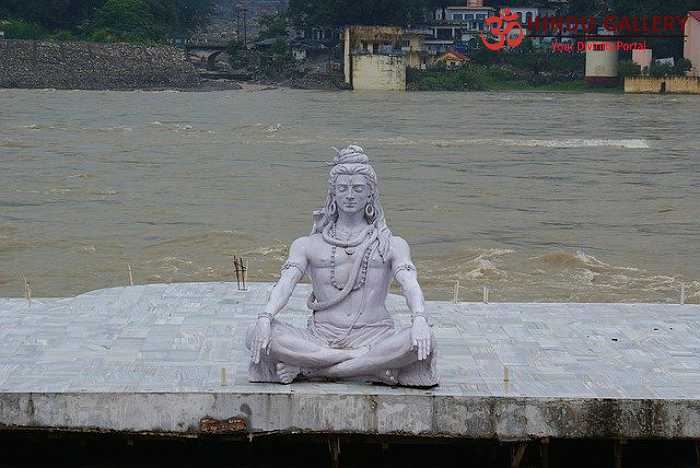
As Bhagwan Shiva is instrumental in the earthly journey of river Ganga, it is considered auspicious to take a holy dip in Ganga on Shivratri.
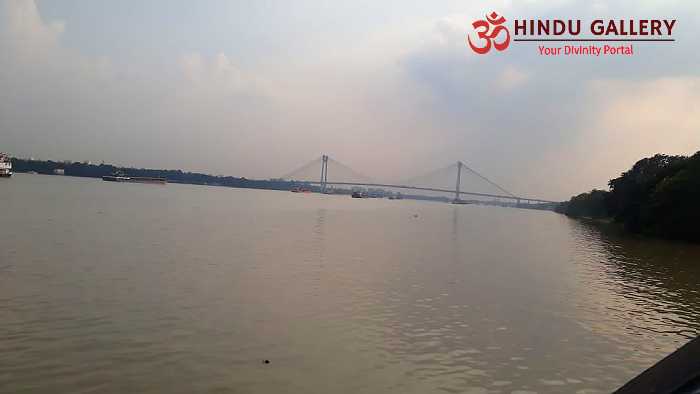
Sri Maha Shivratri – reason for being awake
It is believed that there may be re-alignment of celestial bodies in the galaxy on this day. Because of the re-alignment, the northern hemisphere is expected to be in a special position. This position in turn is expected to enhance the energy level of the people.
To spend the energy usefully, it was advised not to sleep. Hence Shiv Mantras are chanted. Bhajans are conducted. Dances are also performed for the Slokas / Stotrams of Bhagwan Shiva.
Shiva Punnyam
As per Sri Skanda Puran, doing the following shall result in earning Shiva Punnyam:
-Going to Shiva temples
-Cleaning the temples
-Lighting lamps and dhup at the temples
-Visiting any Shiv temple from atleast once to thrice a day.
Sri Maha Shivratri Vrat – rituals
-Rise early in the morning and take holy dip / bath;
-At the puja place at home, keep and decorate the picture or vigraha of Bhagwan Shiva with flowers.
-Lamps and dhup are to be lit.
-Sri Shiv Slokas / Stotras are to be chanted.
-Vibhudi (holy ash), Chandan and Kumkum are to be kept in the centre of the eyebrows. This practice is believed to stimulate the energy.
-Some people observe fasting throughout the day and keep awake at night.
-Visit to the Shiv temples nearby and see the abhishekam done to Shiv-Ling. Abhishekams are done with holy water, honey, milk, curd and coconut water. Archana is done with flowers and bilva leaves.
-Abhishekams are also done throughout the night of Maha Shivratri. There will be four sessions of three hours each.
It is believed that doing puja to Bhagwan Shiva with bilva leaves on Shivratri assures a place in Shiv lok.
The festival is observed with ardent devotion and dedication.
Sri Maha Shivrathi – change in season
The festival signifies the end of winter. There is a saying in Tamil, “சிவராத்திரிக்குப் பிறகு சிவசிவான்னு விடிஞ்சுடும்” meaning that sunrise will dawn early after Maha Shivratri day. The beginning of the day will be as vibrant as chanting of “Shiva Shiva”.
Sri Maha Shivratri – Stotrams / Slokas for recitation
There is an endless number of Stotrams / Slokas in praise of and in prayer to Bhagwan Shiva. A few of them are listed below:
-Sri Rudram
–Sri Shiva Panchakshara Stotram
–Sri Lingashtakam
–Sri Shiva Ashtakam
–Sri Bilva Stotram
-Sri Chandra Sekhara Ashtakam
–Sri Marga Bandhu Stotram
–Sri Kaala Bhairava Ashtakam
–Sri Dakshina Murthy Stotram
–Sri Viswanatha Ashtakam
–Sri Vaidyanatha Ashtakam
-Sri Dwadasha Jyotirlinga Stotram
–Sri Ardha Nareeshwara Stotram
-Sri Nataraja Stotram
-Sri Shiva maanasa puja
-Sri Shiva Panchakshara Nakshatramala Stotram
–Sri Shiva Panchakshari Stotram
-Sri Parameswara Matrukaa Vanamaala Stotram
–Sri Shiv Tandav Stotram
–Sri Shiva Namavalya Ashtakam
–Sri Shiva Mahima Stotram
-Sri Shiva Aparadha Kshamapana Stotram
–Sri Chidambareshwara Stotram
–Sri Parvathi Vallabha Ashtakam
–Sri Shiva Gayathri
–Sri Jwara Hara Stotram
–Sri Rudrashtakam
–Sri Shiva Chalisa
–Sri Shiv Arati
Apart from the above samples, there are innumerable literature on Bhagwan Shiva in all the Indian languages.
Shivaaya Parameshwaraaya Chandra-Shekharaaya Nama Om
Bhavaaya GuNa-Shaambavaaya Shiva Taandavaaya Nama Om
Shiva Shiva Shiva Shiva Shivaaya Nama Om
Hara Hara Hara Hara Haraaya Nama Om
Om Nama Shivaya!!!


